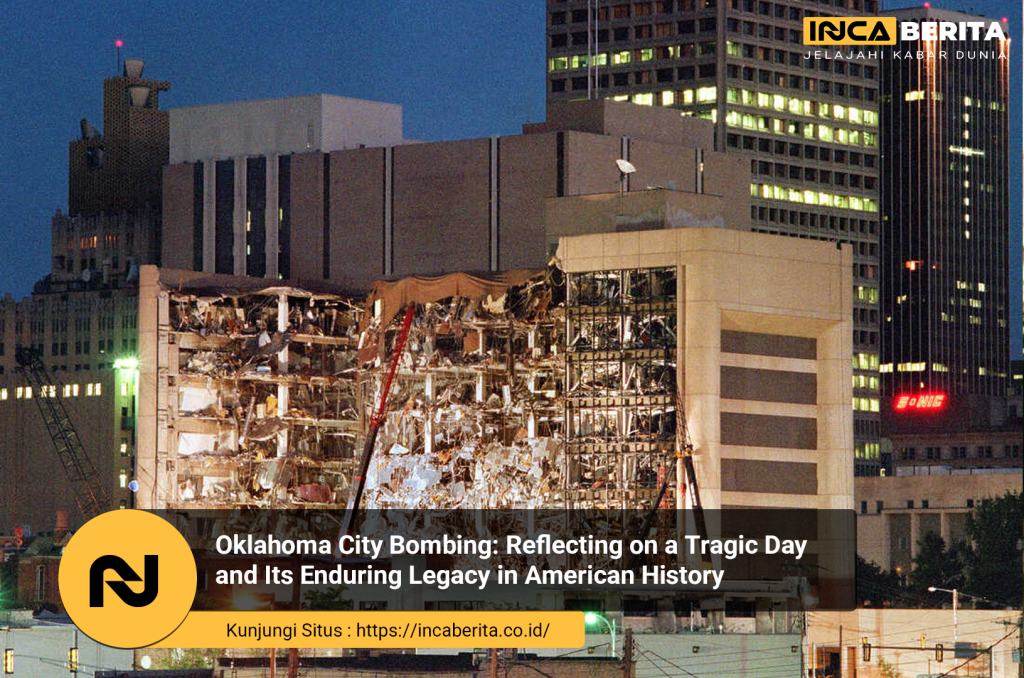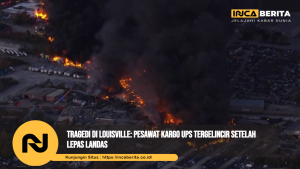Oklahoma City Bombing: A Tragic Chapter in American History and Its Lasting Impact

On April 19, 1995, the United States was shaken by domestic terrorism in its history—the Oklahoma City bombing. A horrific tragedy that claimed 168 lives, including 19 children, and left more than 600 people injured, the bombing targeted the Alfred P. Murrah Federal Building in downtown Oklahoma City. The blast not only devastated the lives of the victims and their families but also left an indelible mark on the country, changing the way America approached domestic terrorism and national security forever.
As a student, I remember reading about the bombing and trying to comprehend the scale of such an event. It was one of those moments that seemed too unfathomable to fully grasp, yet it was real and it altered the course of history in so many ways. The Oklahoma City bombing is more than just an event in a history book—it was a wake-up call that highlighted the vulnerabilities of even the most secure places in America, triggering widespread debates on security, justice, and the forces that drive violence.
In this article, I’ll explore the events surrounding the Oklahoma City bombing, its aftermath, and the lasting impact it had on American society. I’ll also discuss the lessons learned from this tragic chapter and how it continues to shape policies and perspectives to this day.
The Oklahoma City Bombing: What Happened?

The Oklahoma City bombing was the result of a carefully planned attack that took place early on the morning of April 19, 1995. The bomber, Timothy McVeigh, a former U.S. Army soldier, parked a yellow Ryder truck filled with more than 7,000 pounds of explosives in front of the Alfred P. Murrah Federal Building, which housed several federal agencies, including the FBI and the ATF. At 9:02 AM, McVeigh detonated the bomb, causing a massive explosion that completely destroyed the front of the building.
The impact of the blast was catastrophic. The force of the explosion created a massive crater in the street and caused the collapse of several floors of the building. Nearby buildings were also damaged, and debris was scattered for blocks. The blast was so powerful that it could be felt miles away, and it left a gaping hole in the city’s downtown area.
At the time, it was the deadliest terrorist attack on U.S. soil and the largest act of domestic terrorism in U.S. history. The victims ranged from federal employees to children in a daycare center located in the Murrah Building. The youngest victim was just a few months old. McVeigh’s attack was calculated to inflict maximum damage, and it succeeded in causing unspeakable pain and grief.
The Arrest of Timothy McVeigh
In the days following the bombing, a nationwide manhunt ensued. Initially, the bombing was suspected to be the work of Middle Eastern terrorists, especially in light of the 1993 global World Trade Center bombing. However, evidence soon pointed to a domestic perpetrator. Timothy McVeigh was arrested shortly after the bombing on April 21, 1995, for a routine traffic violation. He was later charged with the bombing after law enforcement connected him to the attack.
McVeigh was a vehement anti-government extremist who believed that the U.S. government had become too powerful and corrupt. He saw the bombing as a way to retaliate against what he perceived as government overreach, particularly the federal government’s actions during the 1992 siege at Ruby Ridge and the 1993 standoff at the Branch Davidian compound in Waco, Texas.
McVeigh was eventually convicted of murder and conspiracy in connection with the bombing. He was sentenced to death and executed by lethal injection on June 11, 2001. His co-conspirator, Terry Nichols, was also convicted and sentenced to life in prison.
The Aftermath: The Ripple Effects on the Nation
The Oklahoma City bombing was a pivotal moment for America. In the wake of such an incomprehensible tragedy, the nation was left grappling with questions about the causes of the bombing, the potential for domestic terrorism, and how to protect the public from future attacks.
1. Impact on National Security and Counterterrorism Efforts
Before the bombing, the U.S. had primarily focused its counterterrorism efforts on foreign threats, such as those posed by groups like Al-Qaeda. However, the Oklahoma City bombing revealed a disturbing truth: the threat of terrorism could come from within. The bombing shifted the focus of counterterrorism efforts toward domestic extremism, leading to an increased emphasis on tracking and preventing homegrown threats.
In response to the bombing, the federal government passed the Anti-Terrorism and Effective Death Penalty Act of 1996, which expanded the definition of terrorism and increased penalties for those convicted of terrorist acts. The bombing also led to the creation of new security protocols and measures, particularly around government buildings and public spaces. The federal government took steps to improve security by increasing surveillance, improving intelligence-sharing among agencies, and ramping up counterterrorism efforts to prevent future attacks.
Additionally, the bombing highlighted the need for local law enforcement to work more closely with federal agencies, leading to stronger collaboration between the FBI, the Department of Homeland Security, and other law enforcement entities.
2. Psychological and Social Impact
The Oklahoma City bombing deeply affected the residents of Oklahoma City and the country as a whole. In the immediate aftermath, there was an overwhelming sense of grief, anger, and confusion. Many people struggled to understand how someone could commit such a heinous act against innocent civilians, including children. The bomb’s devastating impact on the local community was felt for years, as families tried to cope with the trauma and loss.
For those directly impacted by the bombing, including survivors and the families of victims, the psychological toll was immense. It became clear that the effects of terrorism were not just physical—they were emotional, long-lasting, and often invisible. As a result, the Oklahoma City community banded together to support one another and rebuild the city’s sense of security.
In the years following the bombing, Oklahoma City and the nation as a whole worked to find ways to heal and move forward. Memorials, like the Oklahoma City National Memorial & Museum, were established to honor the victims and ensure that their stories would not be forgotten.
Lasting Impact: Lessons Learned and Changed Perspectives
The Oklahoma City bombing had far-reaching consequences that continue to shape American society today. It fundamentally altered how Americans view terrorism, national security, and the role of government in protecting its citizens. While the bombing was a tragedy, it also served as a stark reminder of the vulnerabilities in the U.S. and the need to constantly reassess how to combat terrorism.
1. The Rise of Domestic Extremism Awareness
While terrorism was once predominantly associated with foreign actors, the bombing helped bring the reality of domestic terrorism into the national spotlight. Since the bombing, the U.S. government and security agencies have made greater efforts to track and combat domestic extremist groups, including white supremacists, militias, and other violent ideological factions.
The rise of domestic extremism continues to be a concern today, as evidenced by the January 6, 2021, attack on the U.S. Capitol. These events serve as a reminder of the potential dangers of homegrown terrorism and the importance of addressing radicalization before it escalates into violence.
2. A Changed Sense of Security
The bombing led to greater security measures not only in government buildings but also in public spaces, transportation hubs, and other areas where large groups gather. The Department of Homeland Security was created in 2002 to centralize the government’s efforts to protect against terrorism, and its role has grown over time, particularly after the 9/11 attacks.
Public attitudes toward security have shifted as well. Increased surveillance, security checks, and the expansion of intelligence gathering have become more accepted in the wake of the bombing, with many Americans understanding that these measures are necessary to prevent future tragedies.
Conclusion: Reflecting on a Tragic Chapter in History
The Oklahoma City bombing was a pivotal event in American history, one that forever changed the way we view domestic terrorism and national security. The tragedy not only claimed innocent lives but also served as a wake-up call that prompted the U.S. to rethink its approach to security and counterterrorism.
The pain and loss from that day will never be forgotten. But in the years since, the country has come together to learn from this tragedy, working to prevent future attacks and to foster a safer, more secure society. The Oklahoma City National Memorial & Museum stands as a solemn reminder of the resilience of the people of Oklahoma and the nation as a whole, honoring the victims while ensuring that such a tragedy is never repeated.
By remembering the Oklahoma City bombing and its lasting impact, we ensure that the lives lost are never forgotten, and we continue to build a society that stands against hatred and violence.
The Moon landing in 2025 marks a thrilling new chapter in space exploration, promising to push the boundaries of human achievement once again. With advancements in technology and international collaboration, this mission aims to not only set foot on lunar soil but also lay the groundwork for future exploration beyond Earth. As we take this bold step, the Moon landing sparks a sense of wonder and possibility for the next generation of explorers, scientists, and dreamers. It’s a reminder that our curiosity and desire to explore the unknown are limitless.






